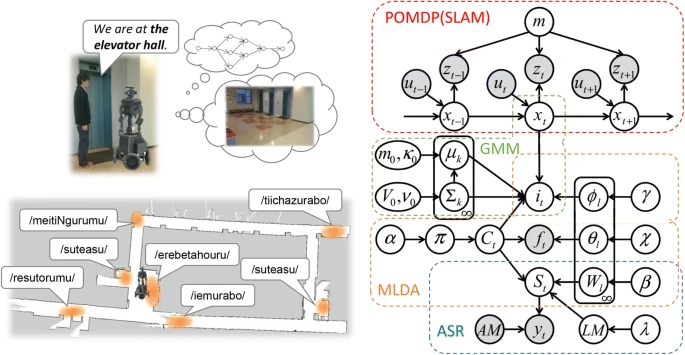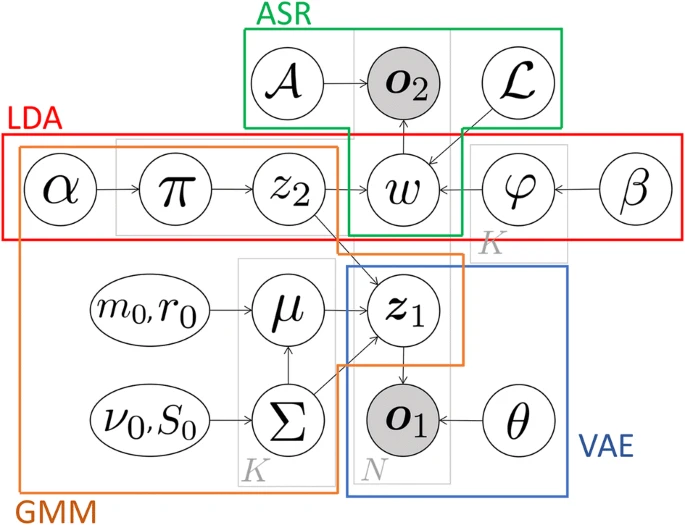Psychology with Deep Learning
This introduction includes Sentiment Analysis, Emoton Detection, Speech Emotion Recognition, MBTI, Behavior Prediction, Social Simulation, Theory of Mind, Brain Model, Episodic Memory, Semantic Memory, The Emotion Machine.
Python libraries for Psychology researchers
PsychoPy
PsychoPy is also a Python application for creating Psychology experiments.
Blog: Best Python libraries for Psychology researchers
- PsyUtils “The psyutils package is a collection of utility functions useful for generating visual stimuli and analysing the results of psychophysical experiments.
- Psisignifit is a toolbox that allows you to fit psychometric functions. Further, hypotheses about psychometric data can be tested.
- Pygaze is a Python library for eye-tracking data & experiments.
- MNE is a library designed for processing electroencephalography (EEG) and magnetoencephalography (MEG) data.
- Kabuki is a Python library for the effortless creation of hierarchical Bayesian models.
- Scikit-learn is an excellent Python package if you want to learn how to do machine learning
Machine Learning in Psychometrics and Psychological Research
Paper: Review of Machine Learning Algorithms for Diagnosing Mental Illness

Bio-inspired Computer Vision
Towards a synergistic approach of artificial and biological vision
Book: Bio-inspired computer vision: Towards a synergistic approach of artificial and biological vision

Computational graph of a foveated spatial transformer network
Code: int-lab-book

Sentiment
Sentiment Analysis of Tweets
Blog: SENTIMENT ANALYSIS OF TWEETS WITH PYTHON, NLTK, WORD2VEC & SCIKIT-LEARN
Dataset: First GOP Debate Twitter Sentiment
Code: Sentiment-Analysis-NLTK-ML and LSTM
Kaggle: Sentiment NLTK
Kaggle: Sentiment LSTM
 |
 |
Depression Detection
Paper: Deep Learning for Depression Detection of Twitter Users
Paper: Machine Learning-based Approach for Depression Detection in Twitter Using Content and Activity Features
Paper: A comprehensive empirical analysis on cross-domain semantic enrichment for detection of depressive language
Paper: DepressionNet: A Novel Summarization Boosted Deep Framework for Depression Detection on Social Media
Code: Detect Depression In Twitter Posts
Emotion Detection
Facial Expression Recognition
Dataset: FER-2013
- 7 facial expression, 28709 training images, 7178 test images
- labels = [“angry”, “disgusted”, “fearful”, “happy”, “neutral”, “sad”, “surprised”]
Kaggle: fer2013-cnn
Code: EmoPy

First Impression
Paper: Predicting First Impressions with Deep Learning
Code: mel-2445/Predicting-First-Impressions
Annotations : Age, Dominance, IQ, Trustworthiness

Large-Scale Facial Expression Recognition
Paper: Suppressing Uncertainties for Large-Scale Facial Expression Recognition
Dataset: Real-world Affective Faces Database (RAF-DB)
- 29672 number of real-world images,
- a 7-dimensional expression distribution vector for each image,
- two different subsets: single-label subset, including 7 classes of basic emotions; two-tab subset, including 12 classes of compound emotions,
- 5 accurate landmark locations, 37 automatic landmark locations, bounding box, race, age range and gender attributes annotations per image,
- baseline classifier outputs for basic emotions and compound emotions.
Code: Self-Cure-Network

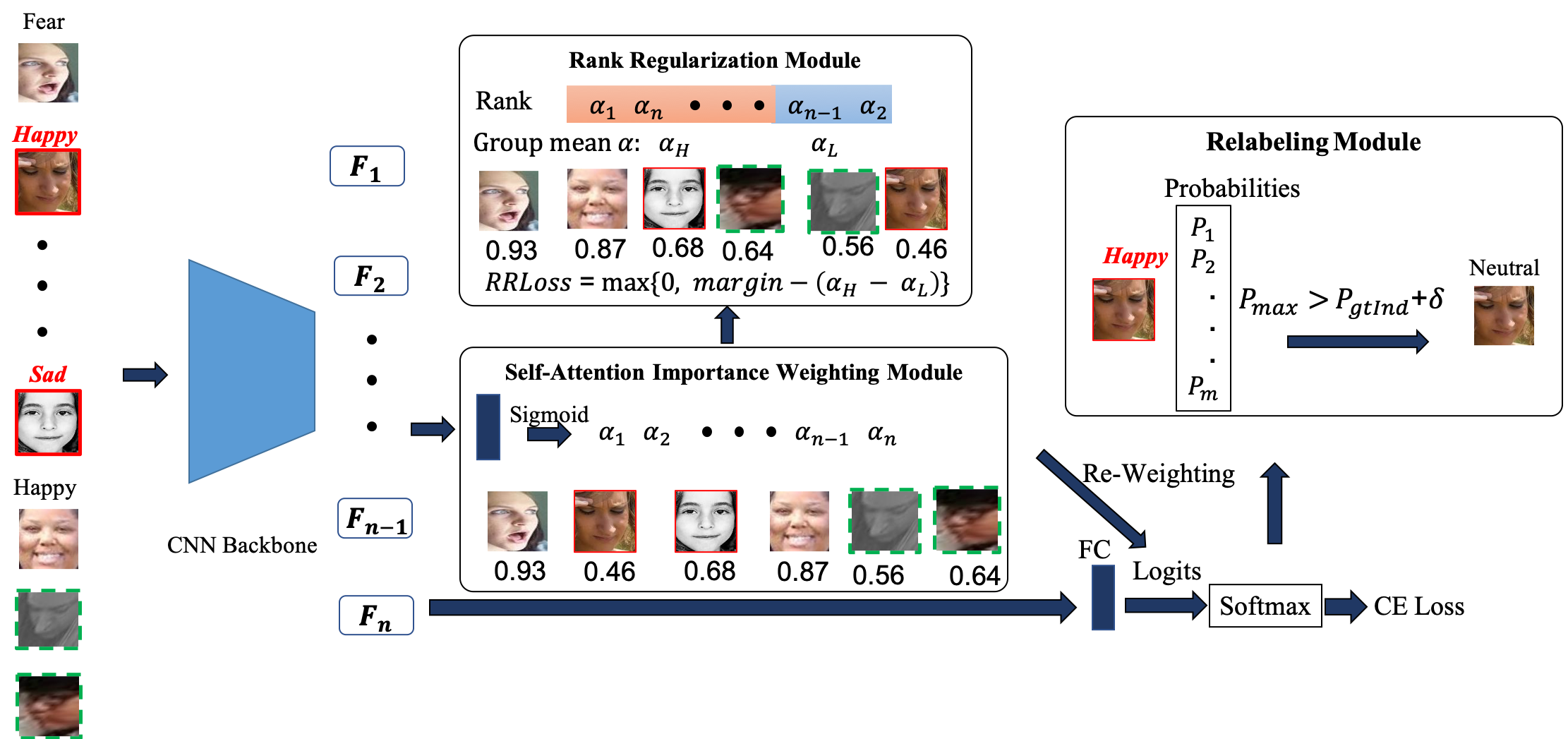
Emotion Recognition from Body Gestures
Paper: A Generalized Zero-Shot Framework for Emotion Recognition from Body Gestures

Speech Emotion Recognition (SER)
Datasets
- Toronto emotional speech set (TESS)
- CREMA-D (Crowd-sourced Emotional Multimodal Actors Dataset)
- Surrey Audio-Visual Expressed Emotion (SAVEE)
- The Ryerson Audio-Visual Database of Emotional Speech and Song (RAVDESS)
- RAVDESS Emotional speech audio
Audio Emotion Recognition
Kaggle: Audio Emotion Recognition
Kaggle: Audio Emotion
BERT-like self supervised models for SER
Paper: Jointly Fine-Tuning “BERT-like” Self Supervised Models to Improve Multimodal Speech Emotion Recognition
Code: shamanez/BERT-like-is-All-You-Need

Fine-Grained Cross Modality Excitement for SER
Paper: Learning Fine-Grained Cross Modality Excitement for Speech Emotion Recognition
Code: tal-ai/FG_CME
Dataset: IEMOCAP, RAVDESS

SER Using Wav2vec 2.0 Embeddings
Paper: Emotion Recognition from Speech Using Wav2vec 2.0 Embeddings
Code: habla-liaa/ser-with-w2v2

Few-shot Learning in Emotion Recognition of Spontaneous Speech
Fixed-MAML for Few-Shot Multilingual SER
Paper: Fixed-MAML for Few Shot Classification in Multilingual Speech Emotion Recognition
Code: Fixed-MAML
Dataset: EmoFilm - A multilingual emotional speech corpus



Multimodal Sentiment Analysis
MISA
Paper: MISA: Modality-Invariant and -Specific Representations for Multimodal Sentiment Analysis
Transformer-based joint-encoding
Paper: A Transformer-based joint-encoding for Emotion Recognition and Sentiment Analysis
Code: bdel/MOSEI_UMONS
Multimodal Transformer Encoder for two modalities with joint-encoding

Multimodal Fusion
Paper: Improving Multimodal Fusion with Hierarchical Mutual Information Maximization for Multimodal Sentiment Analysis
Code: Multimodal Deep Learning

Bi-Bimodal Modality Fusion
Paper: Bi-Bimodal Modality Fusion for Correlation-Controlled Multimodal Sentiment Analysis
Code: declare-lab/BBFN

K-EmoCon
CycleEmotionGAN++
Paper: Emotional Semantics-Preserved and Feature-Aligned CycleGAN for Visual Emotion Adaptation

Myers–Briggs Type Indicator (MBTI)
Myers–Briggs Type Indicator (MBTI) Assignment
An Overview of the Myers-Briggs Type Indicator
MBTI scales:
- Extraversion (E) – Introversion (I) 外向型 vs 內向型
- Sensing (S) – Intuition (N) 實感型 vs 直覺型
- Thinking (T) – Feeling (F) 思考型 vs 情感型
- Judging (J) – Perceiving (P) 判斷型 vs 感覺型
The MBTI Types:
- ISTJ - The Inspector
- ISTP - The Crafter
- ISFJ - The Protector
- ISFP - The Artist
- INFJ - The Advocate
- INFP - The Mediator
- INTJ - The Architect
- INTP - The Thinker
- ESTP - The Persuader
- ESTJ - The Director
- ESFP - The Performer
- ESFJ - The Caregiver
- ENFP - The Champion
- ENFJ - The Giver
- ENTP - The Debater
- ENTJ - The Commander
Predicting MBTI with RNN
Dataset: (MBTI) Myers-Briggs Personality Type Dataset
Kaggle: mbti-lstm
Personality Analyzer
Code: personality prediction from text
Using FB webscraper, based on RandomForestClassifier & TfidfVectorizer

- Install MongoDB
- Scrape friends info from your FB account (fb_webscraper.py)
- Train model (model.py)
- Make Prediction (predict.py)
Behavior Prediction
Understanding Consumer Behavior with RNN
Paper: Understanding Consumer Behavior with Recurrent Neural Networks

CPC-18
Paper: Predicting human decisions with behavioral theories and machine learning
Raw Data: All raw data for CPC18
Code: CPC-18 baseline models and source code
MLP + Cognitive Prior
Paper: Cognitive Model Priors for Predicting Human Decisions

Predicting human decision making in psychological tasks
Paper: Predicting human decision making in psychological tasks with recurrent neural networks
Code: HumanLSTM
Social Simulation
- System-level simulations (SLS) - Explore a given situation as a whole and how individuals and groups respond to the presence of certain variables.
- System-level modeling (SLM) - Creates a more complex and sophisticated environment and aims to be able to make predictions about the behavior of any individual entity or thing within the simulation.
- Agent-based social simulation(ABSS) - Models societies on intelligent agents and studies their behavior within the simulated environment for the application to real-world situations.
- Agent-based modeling (ABM) - Involves independent agents with individual-specific behaviors interacting in networks.
Neural MMO
Blog: OpenAI 打造 Neural MMO 遊戲,觀察 AI 在複雜開放世界中表現
Paper: The Neural MMO Platform for Massively Multiagent Research
UserGuide
Social Influence
Paper: Learning to Communicate with Deep Multi-Agent Reinforcement Learning
Paper: Social Influence as Intrinsic Motivation for Multi-Agent Deep Reinforcement Learning
Paper: TarMAC: Targeted Multi-Agent Communication
Blog: About communication in Multi-Agent Reinforcement Learning
 Code: Sequential Social Dilemma Games
Code: Sequential Social Dilemma Games
Theory of Mind
Theory of Mind: refers to the mental capacity to understand other people and their behavior by ascribing mental states to them
Paper: Mindreaders: the cognitive basis of theory of mind
Blog: How the Theory of Mind Helps Us Understand Others
One study found that children typically progress through five different theory of mind abilities in sequential, standard order.6
Tasks Listed From Easiest to Most Difficult:
- The understanding that the reasons why people might want something (i.e. desires) may differ from one person to the next
- The understanding that people can have different beliefs about the same thing or situation
- The understanding that people may not comprehend or have the knowledge that something is true
- The understanding that people can hold false beliefs about the world
- The understanding that people can have hidden emotions, or that they may act one way while feeling another way
Machine Theory of Mind
Paper: Machine Theory of Mind
Code: VArdulov/ToMNet
APES
Paper: APES: a Python toolbox for simulating reinforcement learning environments
Github: Artificial Primate Environment Simulator (APES)
Code: APES-simple
Perspective Taking
Paper: Perspective Taking in Deep Reinforcement Learning Agents
Perspective taking is the ability to look at things from a perspective that differs from our own [15].
It could be defined as “the cognitive capacity to consider the world from another individual’s viewpoint”
 (a) Overview of the simulation environment and visual encodings. The artificial monkey with green circle
is the subordinate agent and the one with red circle is the dominant agent.
(a) Overview of the simulation environment and visual encodings. The artificial monkey with green circle
is the subordinate agent and the one with red circle is the dominant agent.
(b) Two examples of a subordinate agent goal-oriented behavior as driven by our neural network controller.
In the top panel the agent should avoid the food as it is observed by the dominant. In the bottom panel the agent should acquire the food as it is not observed by the dominant.
 Code: APES_PT
Code: APES_PT
Kaggle: rkuo2000/APES-PT
Visual Perspective Taking
Paper: Visual Perspective Taking for Opponent Behavior Modeling
Visual Perspective Taking (VPT) refers to the ability to estimate other agents’ viewpoint from its own observation.

ToMNet+
Paper: Using Machine Theory of Mind to Learn Agent Social Network Structures from Observed Interactive Behaviors with Targets
Code: ToMnet+ project


Visual Behavior Modelling
Paper: Visual behavior modelling for robotic theory of mind
Code: Visual Behavior Modelling
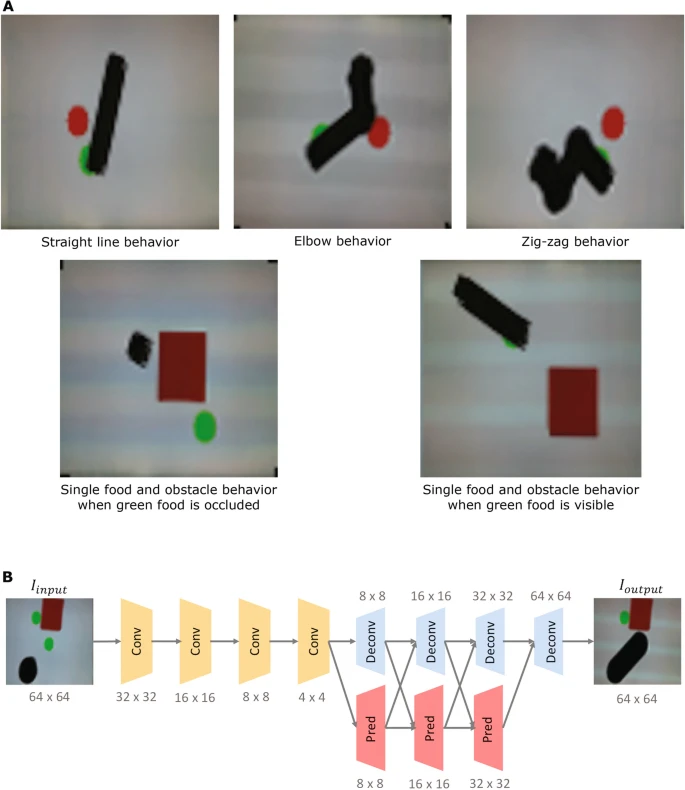
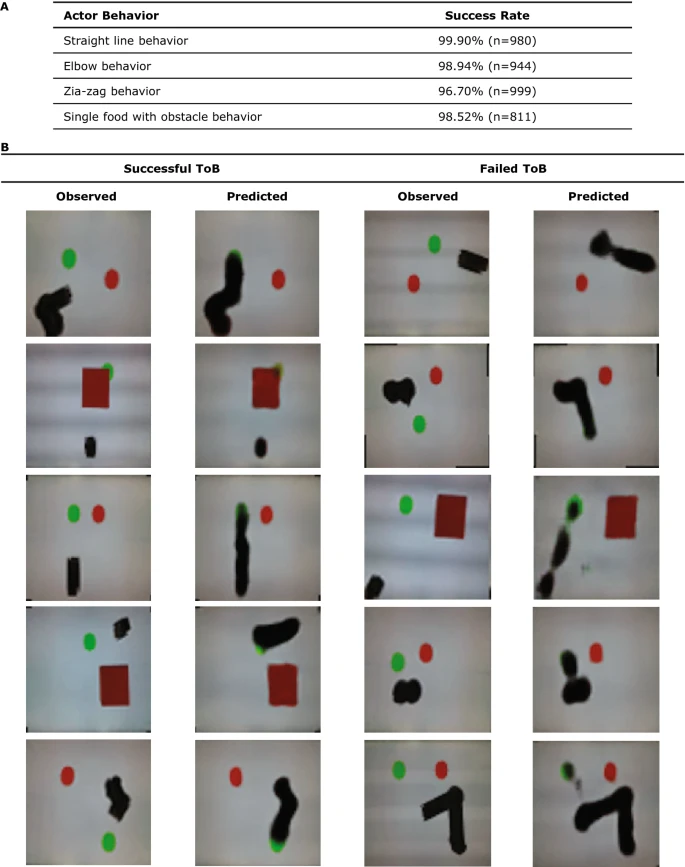
ToM for Humanoid Robot
Paper: Theory of Mind for a Humanoid Robot

 The phenomenon of habituation has been described generally as decrement in response to repeated stimulation (Harris 1943)
The phenomenon of habituation has been described generally as decrement in response to repeated stimulation (Harris 1943)
CX-ToM
Brain Model
Brain-like DNN
Paper: Brain hierarchy score: Which deep neural networks are hierarchically brain-like?

DNNBrain
Paper: DNNBrain: A Unifying Toolbox for Mapping Deep Neural Networks and Brains
Code:BNUCNL/DNNBrain
DNN Model: AlexNet
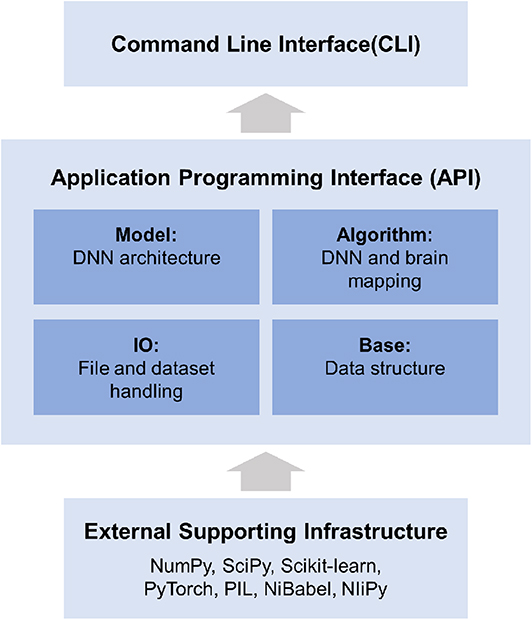
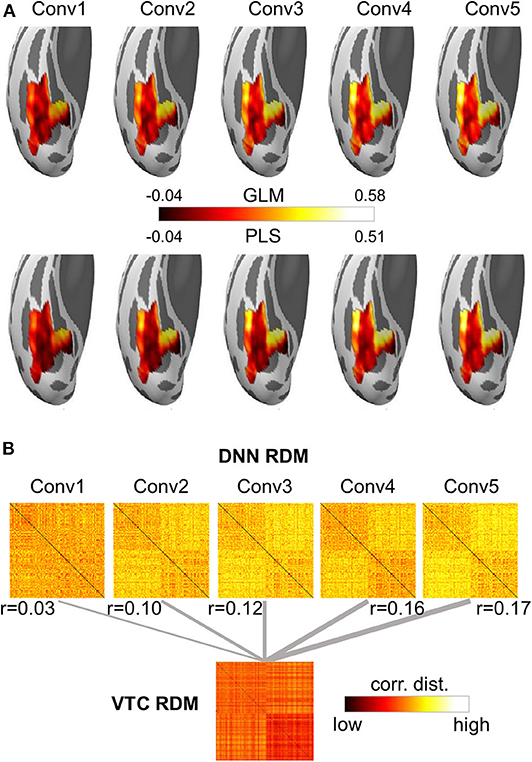
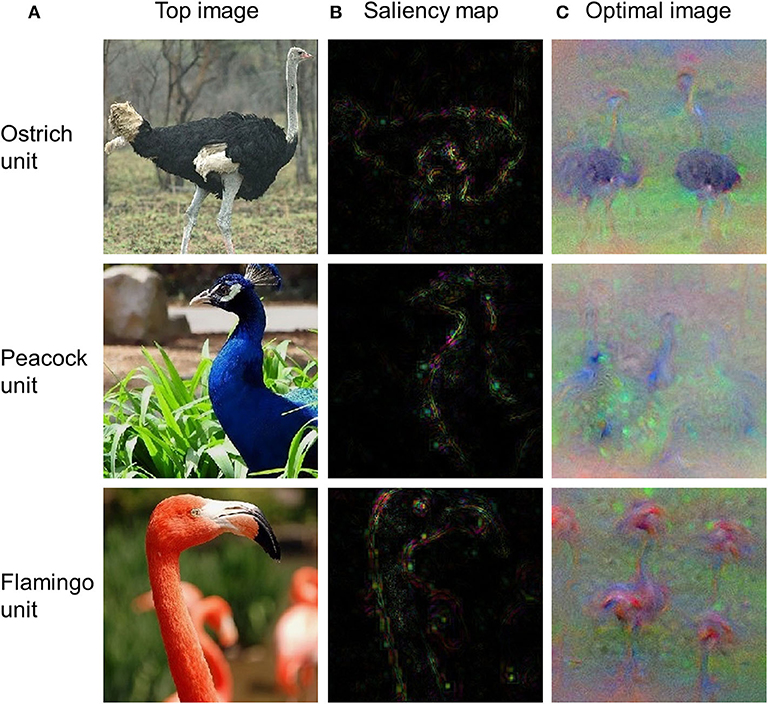
GNN
Paper: Graph Neural Networks in Network Neuroscience

BrainGNN
Paper: BrainGNN: Interpretable Brain Graph Neural Network for fMRI Analysis


DMBN
Paper: Deep Representation Learning For Multimodal Brain Networks

BrainNNExplainer
Multi-GCN
Paper: Multiplex Graph Networks for Multimodal Brain Network Analysis


Learning
Self-supervised Learning
Paper: Self-supervised learning through the eyes of a child
Dataset: SAYCam: A large, longitudinal audiovisual dataset recorded from the infant’s perspective
Code: eminorhan/baby-vision
databrary


Generalized Schema Learning
Paper: Learning to perform role-filler binding with schematic knowledge
Code: cchen23/generalized_schema_learning
 Coffee shop World
Coffee shop World
The “engine” takes a schema and generates a bunch of stories!
python run_engine.py poetry fight 2 2
Neural Model of Schemas and Memory
Paper: A Neural Model of Schemas and Memory Consolidation


Episodic Memory
Episodic Memory Reader
Paper: Episodic Memory Reader: Learning What to Remember for Question Answering from Streaming Data


Episodic Memory in Lifelong Language Learning
Paper: Episodic Memory in Lifelong Language Learning
Code: episodic-lifelong-learning
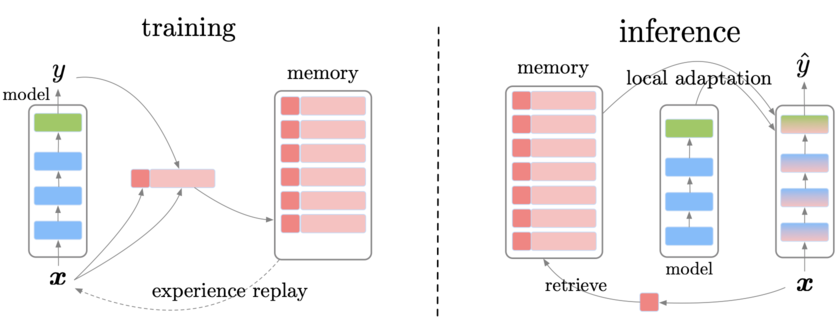
Replay Episodic Memory
Paper: DRILL: Dynamic Representations for Imbalanced Lifelong Learning

Semantic Memory
Paper: Semantic Memory: A Review of Methods, Models, and Current Challenges
- Semantic Memory Representation
- Network-based Approaches
- Feature-based Approaches
- Distributional Approaches : Distributional Semantic Models (DSMs)
- Semantic Memory Learning
- Error-free Learning-based DSMs
- Error-driven Learning-based DSMs: word2vec
- Contextual and Retrieval-based Semantic Memory
- Ambiguity Resolution in Error-free Learning-based DSMs
- Ambiguity Resolution in Predictive DSMs: ELMo, BERT, GPT-3
- Retrieval-based Models of Semantic Memory
Meta-Learning with Variational Semantic Memory
Paper: Meta-Learning with Variational Semantic Memory for Word Sense Disambiguation
Code: VSM_WSD

Growing Dual-Memory (GDM)
Paper: Lifelong Learning of Spatiotemporal Representations with Dual-Memory Recurrent Self-Organization
Code: GDM: Growing Dual-Memory Self-Organizing Networks
Dataset: Iris Species
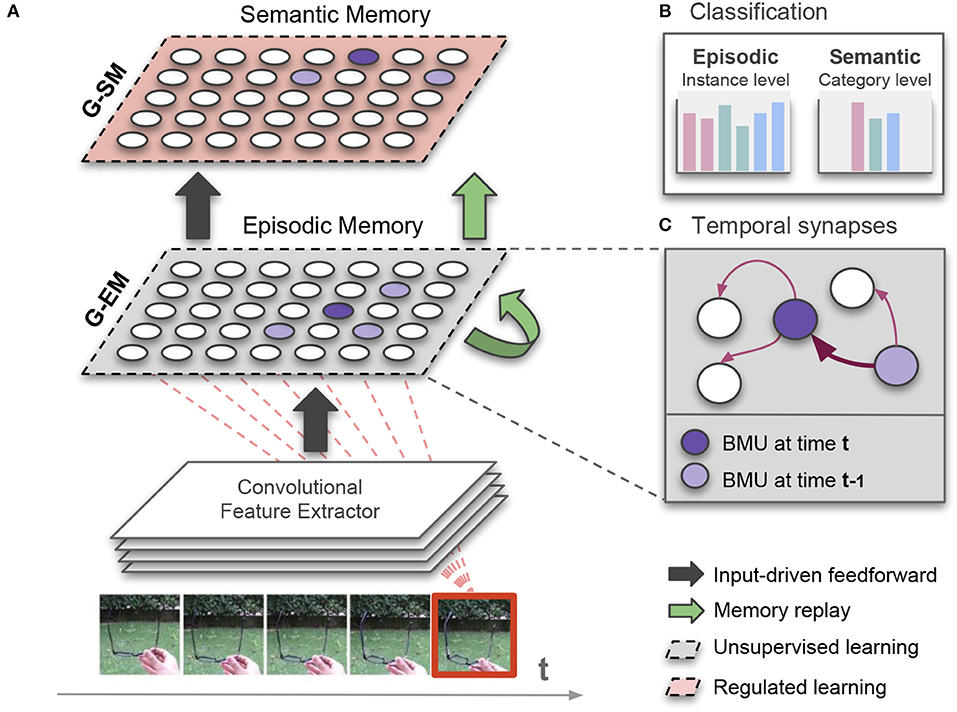
CAT
Paper: Continual Learning of a Mixed Sequence of Similar and Dissimilar Tasks
Code: CAT (Continual learning with forgetting Avoidance and knowledge Transfer)

The Emotion Machine
Video Lectures by Marvin Minsky
Six-level Model of Mind

Attachments and Goals

From Pain to Suffering
 |
 |

Consciousness


Self
 |
 |
Enhancing Cognitive Models of Emotions with Representation Learning
Paper: Enhancing Cognitive Models of Emotions with Representation Learning
Code: emorynlp/CMCL-2021
 The 2D plot from the PAD values of 32 emotions predicted by regression models
The 2D plot from the PAD values of 32 emotions predicted by regression models

Emotion wheel proposed by Plutchik (1980).

Machine Consciousness Architecture
Paper: A Machine Consciousness architecture based on Deep Learning and Gaussian Processes
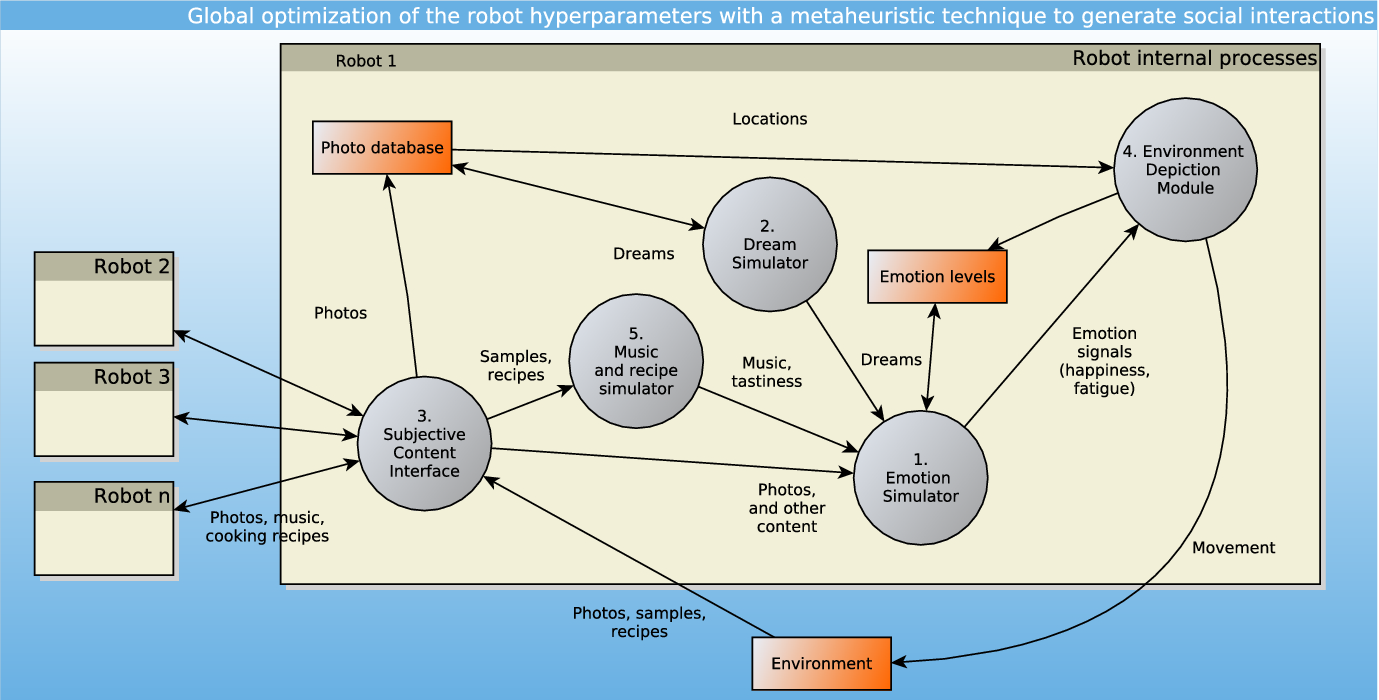
Cognitive Architecture
Cognitive Psychology
Paper: Cognitive Psychology for Deep Neural Networks: A Shape Bias Case Study
 —
Paper: The Cognitive Structure of Emotion
—
Paper: The Cognitive Structure of Emotion
MECA
Paper: An Overview of the Multipurpose Enhanced Cognitive Architecture (MECA)

Whole-Brain Probabilistic Generative Model (WB-PGM)
Paper: Hippocampal formation-inspired probabilistic generative model
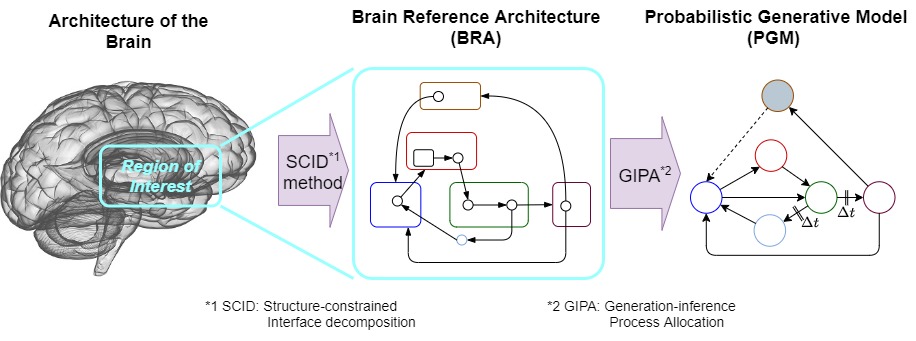
Integrated Cognitive Model
Paper: Integrated Cognitive Architecture for Robot Learning of Action and Language



Integrated PGM
Analogical Concept Memory
A review of possible effects of cognitive biases
Spatial Navigation
Paper: The Cognitive Architecture of Spatial Navigation: Hippocampal and Striatal Contributions
 A Minimal Cognitive Architecture for Spatial Navigation
A Minimal Cognitive Architecture for Spatial Navigation


Patterns of Cognitive Appraisal in Emotion
Paper: Patterns of Cognitive Appraisal in Emotion
Fusion Architecture for Learning and Cognition
Paper: Fusion Architecture for Learning and COgnition (FALCON) FALCON is a three-channel fusion Adaptive Resonance Theory (ART) network
- Imitative learning
- Reinforcement learning
- Dual-Stage learning
CRAA
The Cognitive Regulated Affective Architecture
Affective User Model in Behaviroal Health
The Case for Cognitive-Affective Architectures as Affective User Models in Behavioral Health Technologies
This site was last updated December 22, 2022.







